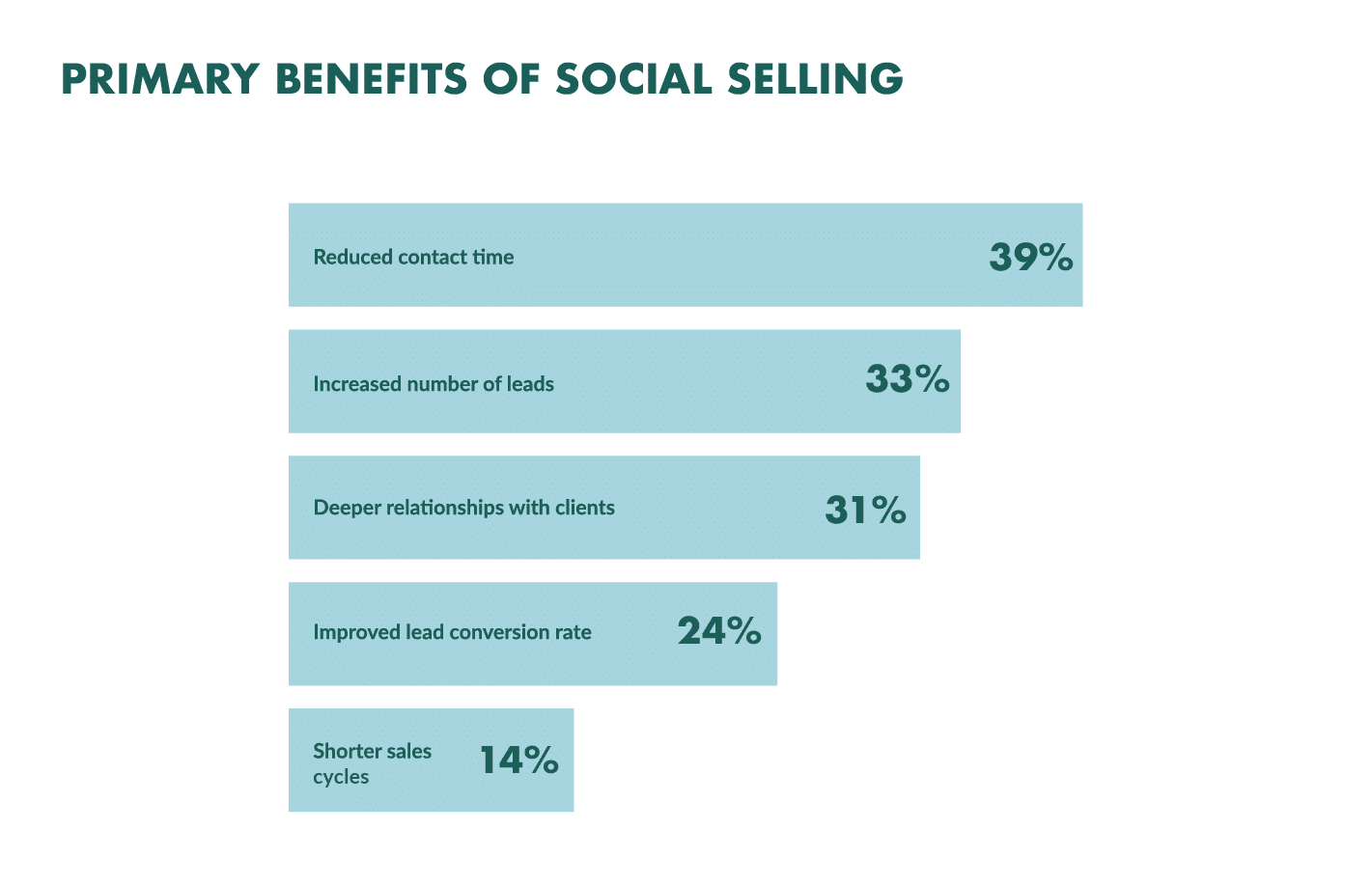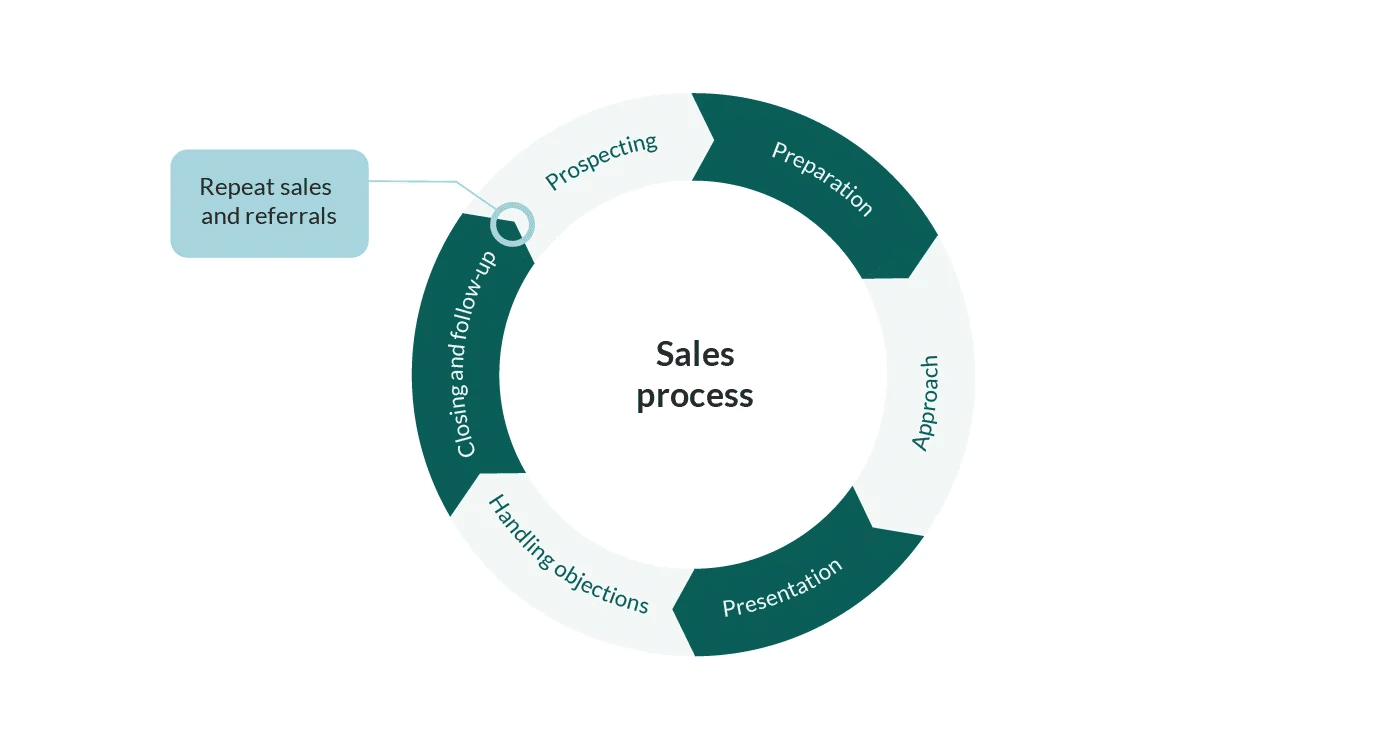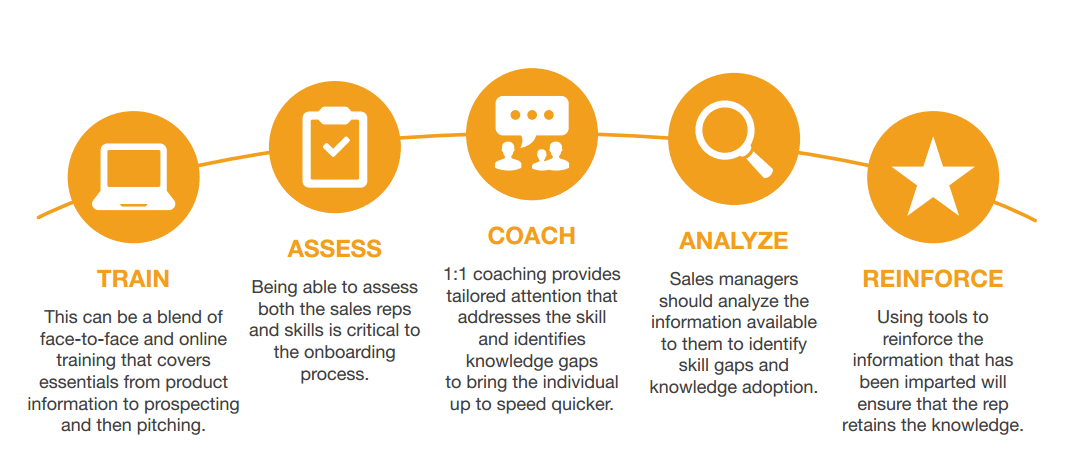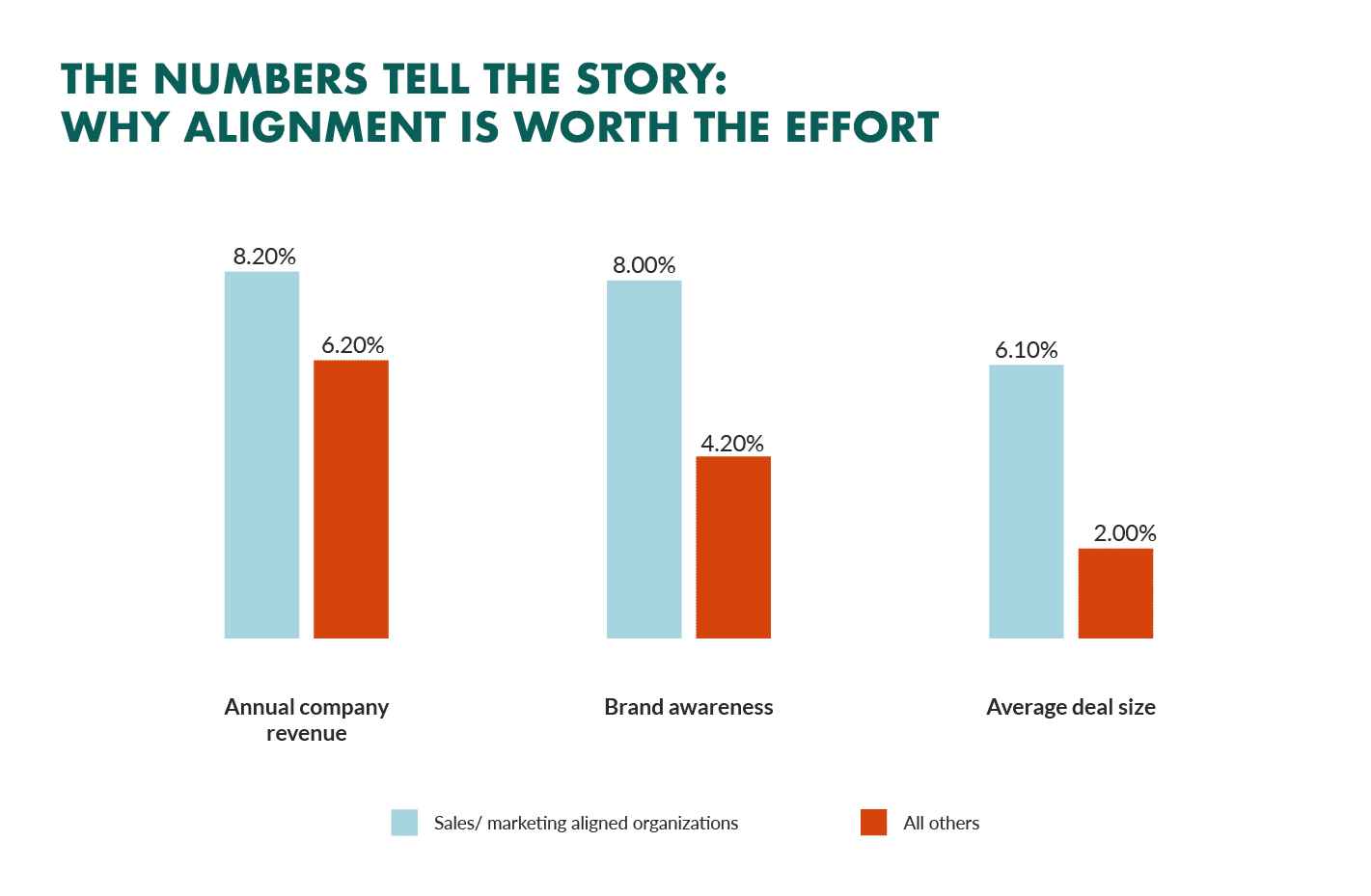Every sales initiative should be founded on a strong sales strategy. Your sales strategy is what keeps teams on track, productive and goal-oriented. Your sales strategy is the driving force behind bigger and better results.
It’s important to write down a clear and targeted sales strategy early on in the development process. As the old saying goes, prior planning prevents poor performance. It’s true. While there’s no one-size-fits-all sales strategy for every business, building your own remains key to success.
As a sales manager or lead, you’ll need to tailor your method according to your organisation’s unique customer base, working model, communication channels and performance indicators. If that all sounds a bit daunting at the moment, don’t worry. We’re going to be covering everything you need to know to start building and implementing successful sales strategies in your business.

What is a sales strategy?
A sales strategy is essentially a product positioning plan. You might think of it as a defined method that helps show off your business’ products or services to your target personas and persuade them that they need it.
Most often, sales strategies contain detailed guidelines and best practices for implementation. The methods you choose depend wholly on your particular target customer, product or service. Some of the most typical and popular sales strategies include inbound and outbound calling, social selling and email marketing campaigns.
It all boils down to one clear objective: sell more products. Your sales strategy should act as a guide for sales teams to help them achieve that most effectively and efficiently possible. The best sales strategies cover all bases from market research to lead qualification, brand language and more.
Types of sales strategies
There are many different types of sales strategies out there. You’ll need to pick a combination of strategies that work best for your customer base, staff makeup and sales goals. Let’s take a look at some of the most common strategies.
1. Inbound sales
Inbound strategies draw customers in. In other words, an inbound strategy will attract leads who are already engaging with your brand. The customer is the active agent. They start the conversation.
To attract new leads, your sales team will need to generate lots of visibility for your campaign. This is usually achieved via social marketing, search engine optimisation (SEO), and content-based marketing campaigns. Encouraging potential customers to engage with your website by providing interesting content is a great way to capture their attention without making them feel like they’re directly being sold. For instance, if you’re a SaaS brand, you’d want to host interesting, technical content aimed at the market your software is in.
By engaging with customers meaningfully, brands will encourage potential customers to engage actively and become customers.
2. Outbound sales
As the name suggests, outbound sales are the opposite of inbound methods. Outbound sales strategies reach out to customers. In other words, an outbound sales strategy will prospect leads who have not previously engaged with your brand – or at least, who aren’t currently engaged.
In this case, the salespeople are active agents. They start the conversation with qualified leads. The most successful outbound sales strategies are based on relationship building and trust. You’ll need to hire sales staff with excellent communication skills, empathy, patience, and charisma to close leads. Outbound sales are most commonly conducted via cold calling or emailing and, in general, are more general and forthright than the alternative strategies.

3. Social selling
Social selling refers to sales communications made via social media platforms. The idea is a bit like cold calling 2.0. Instead of using the telephone to generate leads, sales reps use online social strategies and social listening to build relationships with prospects online. To nurture leads, salespeople will engage with their target audience with relevant, engaging, brand-centric content. Social media can help generate more leads over a shorter sales cycle. This makes it an increasingly popular strategy for sales teams.

4. Personal selling
Personal selling is a sales strategy based on person-to-person interactions. That could be a face-to-face meeting, but it’s not strictly necessary. Personal selling strategies can equally take place via the telephone, videoconference, or email. The key to personal selling is – you guessed it – personalisation. Communication should be centred around an individual customer’s needs.
Sales representatives resolve each prospect’s issues by showing them how their company’s product or service can help them. Personal selling is highly effective when combined with long-term business relationships. It is, therefore, a more time-consuming strategy than cold-calling or social selling. However, for some businesses – particularly those selling high-ticket items – personal selling is preferred.
As well as high-ticket items, it’s a great tactic for businesses looking to have ongoing relationships, for instance, wholesalers selling to retail stores.
5. B2B selling
Business to business selling refers to sales strategies directed at other businesses. This often requires a specific B2B sales strategy depending on the company size. These sales tend to be high in value and often require longer sales cycles (particularly when selling to enterprises). B2C sales, by contrast, are sales made to individual consumers. These contracts tend to have shorter selling cycles.
How to build a sales strategy
Every sales strategy will be different. As we said, there’s really no one-size-fits-all solution. When developing a sales strategy for your organisation, you’ll need to consider your available resources, your target market, and your sales goals. There are, however, certain elements that are integral to every sales plan. So it’s important to keep these in mind when developing a sales plan of your own.
-
Measurable KPIs
Strong sales strategies are goal-orientated. The best goals are those that are trackable. By incorporating trackable goals into your sales planning, you’ll be able to monitor whether or not your campaign is actually working! For example, you might have a daily sales quota in mind, the desired click-through rate, or a customer effort score. Using key performance indicators to monitor your performance day-on-day will keep your project on track, keep motivation high, and facilitate continuous optimisation.
-
Target persona
Identify your target persona. We recommend creating a detailed customer profile to represent your ideal customer. Ask yourself: who am I selling to? Consider demographics and category types such as location, skills, interests, financial status – anything that informs how someone will engage with your company. If you’re selling B2B, make sure to take into account the details of the businesses you will be selling to, but don’t forget to find out about the individuals you’ll be talking to as well.

-
Offer value
Once you’ve identified your target persona, establish a value proposition. A value proposition is a succinct roundup of your product or service and should highlight why and how it will solve your customers’ pain points. For example, if your company sells accounting software to small businesses, make sure you’re translating its core value through your sales pitch. In this case, you might do this by highlighting how much time and money this tool can help them save.
-
Outreach channels
It’s time to decide which channels you’re going to mobilise as part of your sales strategy. This should be informed by the type of buyer persona you are targeting. Pick those platforms that they are most likely to engage with. A multi-channel campaign will help you reach a wider circle of prospective buyers. Options include telephone-based sales calls. Social media (LinkedIn is a great option, particularly for business-to-business outreach), sales presentations and demonstrations, display advertising, email marketing, or person-to-person sales. These days, some companies have even started leveraging chatbot technology for their sales initiatives.
-
CRM
Customer relationship management (CRM) software tools are typically cloud-based portals where customer information can be stored and managed. Having a well-managed CRM solution is crucial to any sales strategy. So make sure you’ve got a one up and running to manage your contacts, customer support, and marketing automation.
This will help you work efficiently and offer a great deal of flexibility and scalability in future growth. Typical features and functions include sales quotas and forecasting, pricing, management, and team collaboration options. Additionally, many CRM systems can be easily integrated with, and work alongside, your existing workplace tools – such as RingCentral Office.
-
Sales process
Every sales strategy needs a clearly defined process. This is the bread holding your sales sandwich together. Create a detailed outline for every step in your sales and buying process and clear guidelines for identifying high-quality prospect leads. The best sales strategies pre-plan everything. We recommend creating a written document containing the following:
- Prospecting and preliminary research
- A step-by-step customer sales approach
- A pre-prepared sales pitch
- Possible responses to difficult questions or objections
- Effective closing techniques and follow-up options

Pro-tip: when formulating a sales agenda, make sure to take into account a detailed competitor analysis. The most successful sales strategies build and improve upon the methods of their direct competitors.
Sales training and onboarding
Your sales strategy is ready. Congratulations, that’s great news. But hold your horses. It’s not quite time to launch into a sales campaign all-guns-blazing just yet. All good sales strategies need to be backed up and supported by well-trained sales representatives.
Make sure you have a robust onboarding and training program set up ahead of time. This is your opportunity to equip your sales teams with the knowledge and skills they need to execute your sales plan. It’s important to be selective when hiring new sales reps.
This is not a job that everyone is cut out for. Sales representatives require high levels of emotional intelligence, stamina and assertiveness. Dealing with the inevitable unruly customers can be tough. You’ll want to recruit individuals who can stand up against this kind of pressure.
When it comes to training your new recruits, focus on the following:
- Core goals and strategies
- How to start a sales conversation
- Closing techniques
- Appropriate language and phrases
- Familiarisation with the call script
- Key communication channels
- Software familiarity

Sales process stages
The time to roll out your sales strategy has arrived. At this point, it’s important to familiarise yourself with the main processes. One way to do this is to separate the selling process into three distinct stages – the awareness stage, the consideration stage, and the decision-making stage. All customers go through these three stages when interacting with a new product or service offer.
Awareness stage
The first stage is the awareness stage. This is when customers are being introduced to your company and the products and services you offer. This is a critical stage for first impressions, as customers are deciding whether to engage with your brand or not. As a business, this is the time to prospect your target customers, pick an appropriate sales communication platform, and offer up your first pitch or sales presentation.
Did you know that 19% of buyers want to actively connect with a salesperson during this first stage while still learning about a new product? This is a great time to use person-to-person sales methods to generate interest.
Consideration stage
The second stage is the consideration stage. During this stage, customers are assessing the information you have presented to them about your company. Your leads are interested, but they are yet to make up their mind about your products. At this point, it’s wise to follow up on qualified leads with educational information.
Make sure you don’t overwhelm your prospects at this stage. Observe patience and follow their lead. Be open to questions and have well-prepared answers. By the consideration stage, the number of prospects who want to connect with sales increases to 60%. By this point, customers have conducted their own research and are seeking more qualified opinions. For this reason, sales reps must be well equipped with specialist product knowledge. That knowledge could make all the difference for sale.
Decision stage
Last but not least is, of course, the decision stage. Once your prospects have weighed up the pros and cons, they will have to come to a decision. It’s important to refrain from the hard-sell. Coming off as pushy will only turn your prospects off. Stay connected with high-quality communication and be patient. And, when the time comes, close those deals.
Once customers have reached the decision stage, they are less likely to seek contact with the sales team. By this point, 20% of consumers wish to connect with a representative.

Sales performance management
Whilst you’re executing your sales strategy, you must also be monitoring your performance. Performance management is a mission-critical part of any sales campaign. You want to be able to locate, analyse, and troubleshoot anything that goes wrong along your sales pipeline. That means staying on top of all those key performance metrics to ensure that your sales plan achieves the desired results.
A great way to achieve this is by using a sales dashboard. Sales dashboards measure and present key performance indicators in simple and easy-to-understand visual layouts. Using a dashboard can help you identify those things that are going well and those in need of improvement.
So, what metrics should you be focusing on? Some of the most useful sales metrics include:
- Total revenue – total income derived from each sales activity in a business
- Gross profit margin – revenue remaining from sales after costs
- Annual contract value – average annual turnover per customer contract
- Sales growth – change in sales over two different periods
- Lead to opportunity ratio – the percentage of leads that convert into opportunities
- Sales closing ratio – the number of offers sent compared to the number of deals closed
- Reps attaining quota – the percentage of reps currently hitting their sales quota
- New hire ramp time – the rate at which new hires ramp to quota attainment
- Content engagement rate – level of follower interaction from content created
- Sales rep turnover – number of employees leaving over a given period of time
- Conversion rate – the percentage of visitors that convert into customers
How to align your sales and marketing strategies
Fostering effective communication channels between your sales and marketing teams is essential if you want to execute a successful sales plan. We advise making a service-level agreement (SLA for short) between your company’s sales and marketing departments, especially if outsourcing is involved.
This agreement outlines the level of service expected from either side and details the criteria to which these standards must be upheld. Sales teams and marketers share a symbiotic relationship. They both feed one another. So ensuring that these two departments are in communication is essential. When marketing suffers, sales suffer and vice versa.
But what actionable steps can we take to keep our marketing strategies and sales strategies united and moving in the same direction? There are three key areas to focus on: integration, consistency and record-keeping.
Integration
First, integration. Ensure that both your sales and marketing teams are working off the same buyer personas and, if possible, using the same software.
Consistency
Keep language and brand messaging consistent between departments. You want your marketing messages to carry through into your sales script template. Remember, you’re dealing with the same customers, and inconsistency doesn’t lead to sales. Key decision-makers from both departments should seek to be in regular consultation.
Record-keeping
Make sure any customer feedback or useful performance data is fed back both to marketing and sales. There may come a time when you want to change or tweak aspects of your campaign, and any changes must be met consistently across departments.
When it comes to strategy alignment, communication is key. With RingCentral Office, it’s easy to maintain effective communication channels between teams and departments both in-office and entirely remotely, letting your teams collaborate from anywhere. The message, video and phone integrations are perfect for maintaining marketing and sales team unity. Plus, it’s simple and easy to integrate RingCentral Office with your other workplace apps.

Examples of successful sales strategies
To help you get your own sales plan into motion, let’s look at some inspirational examples. These three companies have all implemented highly successful sales strategies. But how? Let’s pick apart some of these success stories to see what we can learn.
Salesforce sales strategy
Salesforce is a cloud-based software company specialising in customer relationship management services and customer service enterprise applications. The company has gone from strength to strength thanks to a robust and innovative sales strategy implementation. The numbers don’t lie. As of 2021, the company’s annual revenue stands at an impressive $21.25 billion, marking a 221.3 times increase since 2004.
But what’s the key to their success?
- Simple sales language
- Educating new customers
- Focus on customer success stories
- Solution-oriented brand messaging
- Effective teamwork and collaboration
HubSpot sales strategy
Our second example, HubSpot, is a sales and customer service software development and marketing company. HubSpot’s software packages have become incredibly popular, and the company has continued to grow markedly.
Central to HubSpot’s continued success is:
- Free educational content
- Inbound sales approach
- Thinking from the customers’ point of view
- Hiring the right people with the right skills
- A robust staff recruitment and training programme
- Sales and marketing team communication
Shopify
Last but not least, Shopify is soaring to success and in 2020 measured a full-year revenue growth of 86%. This e-commerce platform has achieved tremendous growth and is expected to reach 400% growth during 2021. But how?
Shopify has achieved sales success by:
- Hiring great people
- Using a data-driven approach to sales
- Mobilising technology with CRM and prospecting tools
- Maintaining high-quality pipelines
- Qualifying leads and eliminating unqualified leads
Make RingCentral part of your sales strategy
If you’re in the process of mobilising a sales strategy of your own, you’ll need to consider which tools will help you get there. RingCentral’s communications solutions are ideal for supporting a wide range of sales operations, from contact centre calling to email, videoconference and more.
Our inbound contact centre solutions are designed to enhance the customer support experience by providing immediate and helpful service for customers via skills-based routing, agent management, schedule optimisation, and real-time insights. That way, you can guarantee that customers will always be connected with the right agents and keep minimal hold times.
Plus, you’ll be able to maintain constant improvements with real-time reporting and surveys.
Alternatively, RingCentral’s outbound contact centre options offer a stack of intuitive features specifically designed to enhance performance outcomes. Improve connection rates, automate tasks, accelerate sales. Everything is in place for a truly efficient selling process. Enjoy quick-start sales campaigns, real-time insights, and predictive dialer technology for reduced call-answering delays and more productive conversations.
Sales strategies that succeed
So there we have it—the essential ingredients for sales strategies that succeed. You don’t have to be a professional strategist to see success. Remember, creating an effective sales strategy takes preparation and commitment. But it is an essential process that you must prioritise if you want to achieve results to be proud of.
No two sales strategies are alike. Each business or organisation needs to consider who they are selling to and how they will sell it. This requires targeted customer research, measurable KPIs, multiple communication channels, value-packed propositions, and all the right tools at your disposal.
RingCentral can help you improve your customer and contact centre experiences and ensure smooth sunning sales processes. And when a sales process proves successful, the rewards are great. So here’s to a future of increased sales, customer retention, and plenty of positive referrals.
Originally published May 25, 2021




![How to Successfully Create a Sales Plan that Works [with Examples and Templates]](/gb/en/blog/wp-content/uploads/2021/05/Young-businessman-discussing-sales-analysis-photo-files-with-colleagues-376x198.jpg)